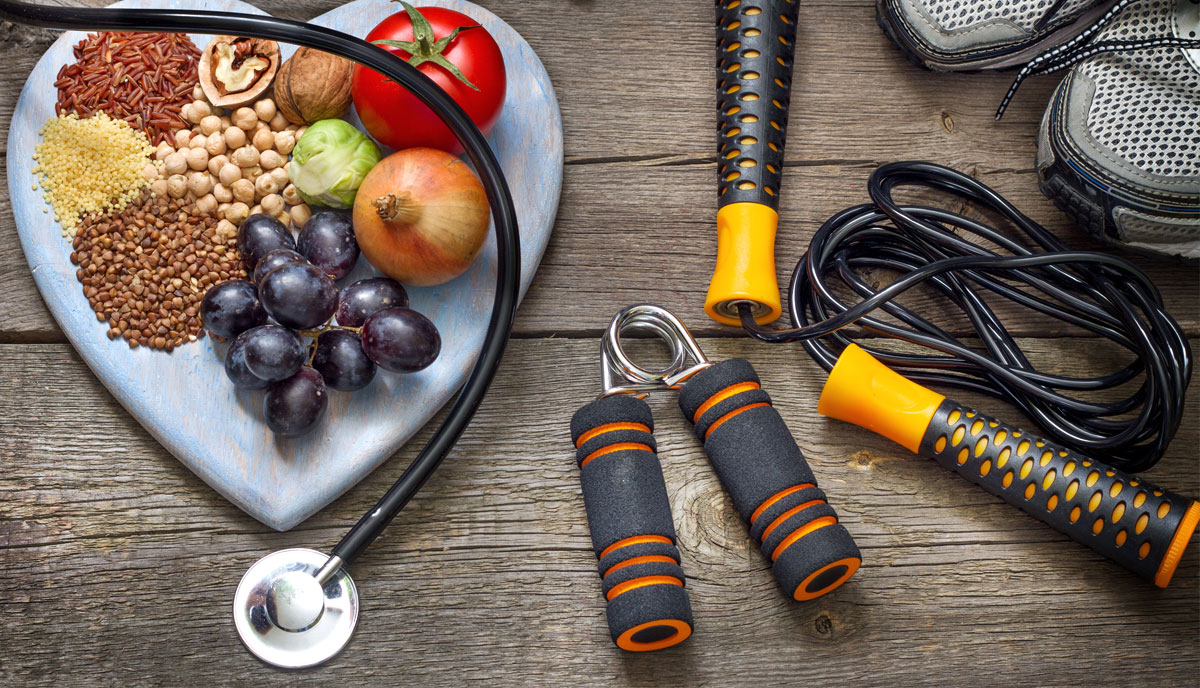
So I Have Diabetes... What Now?
Emma Keating
Pharmacy Intern
1.5 million Americans are newly diagnosed with diabetes every year.1 Diabetes is a disorder that disrupts the way your body processes and uses sugar. Insulin is the most important part of regulating your body’s blood sugar – when you intake sugar (or glucose), the pancreas releases insulin in order to move sugar out of the blood and use it for energy in the cells. There are two types of diabetes: type 1 and type 2. In Type 1, the body doesn’t make enough insulin by itself. In Type 2, the body makes insulin but doesn’t react to it the way it should. Either way, a new diagnosis of diabetes can be difficult and intimidating and you may be asking yourself “What now?”
While there is no cure for diabetes, there are several ways that you can control your condition:
Balanced Meals 2,5
While changing your eating habits may be daunting, nutrition is a powerful tool in the management of diabetes. The same nutritional action plan won’t work for everyone – but there are a few general rules that you can start with. Low carb, vegetarian and Mediterranean meal plans have been shown to lower blood pressure, encourage weight loss and lower A1C (a test that measures your average blood sugar). Choose whole and unprocessed foods over processed foods and limit foods with added sugars or refined grain. Eat fresh, frozen or canned non starchy vegetables such as corn, beans, beets, brussels sprouts, broccoli, cauliflower, mushrooms, kale, salad greens, peppers, and tomatoes. Stay hydrated and try drink water instead of sugary drinks such as soda. Know that just because you are changing your eating habits does not mean you won’t have any choices! There isn’t a “magic” regimen that will work for everyone, so find what works best for you to help manage your blood sugar levels.
Active Lifestyle 3,5
Exercising and being active can actually make your body’s cells more responsive to insulin. Making an exercise plan can be frustrating, but the most difficult part about getting into an exercise routine is starting! It does not matter what your baseline is – as long as you start, you are miles ahead of where you were. Start slowly with lighter activities such as walking and set goals for yourself to build along the way.
Staying motivated to keep moving can also be a challenge, but having a long lasting healthy habit is the best way to gain back some control over your diabetes. Having a friend or group to exercise with can be a huge inspiration – they keep you accountable and vice versa. Don’t be afraid to add some variety into your exercise routine, this can help you work more muscles and add a change of pace.
Medications 4,5
There are many types of medication available to help you manage your diabetes! Like changing your diet, there isn’t a “magic” medication regimen that will work for everyone – diabetes treatment is individualized and sometimes it takes a few trials to find what works best for you. Generally, your medication depends on what type of diabetes you have. Some treatment plans include oral medications while others are injectable. For type 2 diabetes, many doctors start by initially prescribing a medication called metformin and then reassessing your blood sugar levels after 2-3 months to see if you would benefit from a higher dose or another medication. For type 1 diabetes, treatment typically starts with insulin right away instead of other types of oral or injectable medication. Self monitoring of your blood sugar may be suggested by your doctor. Be sure to work closely with your doctor and your pharmacist to make sure you are getting the most from your medications!
Some of the medications that your doctor might prescribe may include:
- Metformin – this medication is generally the first treatment option and is prescribed to most people who are newly diagnosed with type 2 diabetes to reduce high blood sugar levels. This is an oral medication that makes your body more responsive to insulin and can be taken once or twice daily.
- Common side effects can include nausea, diarrhea and gas but this can be reduced by taking metformin with food.
- People with serious kidney, liver or heart disease or those that have high alcohol intake should not take metformin.
- Sulfonylureas (glipizide, glyburide, glimepiride) – these medications are some of the first that were developed to treat diabetes! They are the most inexpensive medication for diabetes. They increase the amount of insulin your body makes and work really well at first, but the effects gradually fade.
- These medications can cause low blood sugar or “hypoglycemia” which can present as sweating, shaking, or feeling anxious / confused. If this occurs, quickly eat 10-15 grams of glucose (can be a glucose tablet, or something you have on hand such as fruit juice)
- People with kidney failure should not take these medications.
- DPP-4 Inhibitors (Januvia, Tradjenta, Nesina, Onglyza) – these medications increase the insulin release from the pancreas after a meal. They will help lower A1c, but tend to lower it less than other medications. Usually these medications are taken orally once daily.
- Common side effects can vary depending on the medication, but can include headache and low blood sugar, especially if you are taking it in combination with another medication.
- SGLT2 inhibitors (Invokana, Jardiance and Farxiga) – these medications lower your blood sugar by increasing the amount of sugar your body excretes in the urine. They are typically taken orally once a day. Jardiance and Invokana have been shown to have some benefit in patients with heart or kidney disease.
- Common side effects include urinary tract infections and dehydration.
- GLP-1 Receptor Agonists (Byettam Bydureon, Victoza, Trulicity, Ozempic) – these are injectable medications that increase insulin release after a meal and have a lower risk for low blood sugar. The dosing schedule varies depending on the medication, some are injected weekly while others are daily. They can also assist with weight loss as they tend to make people have the sense of feeling full after eating less.
- Common side effects include nausea, vomiting and diarrhea but tend to improve over time
- Insulin (Novolog, Humalog, Lantus, Basaglar, etc…) – injectable insulin can be added to oral medications or used by itself. When using insulin, it is very important to self-monitor your blood sugar to make sure you don’t inject more than what your body needs as this could cause low blood sugar. Insulin may need to be injected several times daily depending on your blood sugar the type of insulin your doctor prescribes.
Living with diabetes can be very stressful but by keeping up with your medications and developing healthy eating and exercising habits it can be managed. If you have questions or concerns about your treatment plan, don’t be afraid to reach out to your healthcare provider or your local pharmacist at Price Chopper/Market 32!
SOURCES
- American Diabetes Association: Newly Diagnosed [Internet]. 2020 [cited 2020 Aug 27]. Available from: https://www.diabetes.org/diabetes/newly-diagnosed
- American Diabetes Association: Nutrition [Internet]. 2020 [cited 2020 Aug 27]. Available from: https://www.diabetes.org/nutrition
- American Diabetes Association: Get Fit and Stay Fit [Internet]. 2020 [cited 2020 Aug 27]. Available from: https://www.diabetes.org/fitness/get-and-stay-fit
- Wexler DJ, Nathan DM, Mulder JE. Patient Education: Type 2 Diabetes: Overview Beyond the Basics [Internet]. 2020 [cited 2020 Aug 27]. Available from: https://www.uptodate.com/contents/type-2-diabetes-overview-beyond-the-basics?topicRef=1737&source=see_link
- Wexler DJ, Nathan DM, Mulder JE. Patient Education: Type 2 Diabetes: Treatment Beyond the Basics [Internet]. 2020 [cited 2020 Aug 27]. Available from: https://www.uptodate.com/contents/type-2-diabetes-treatment-beyond-the-basics
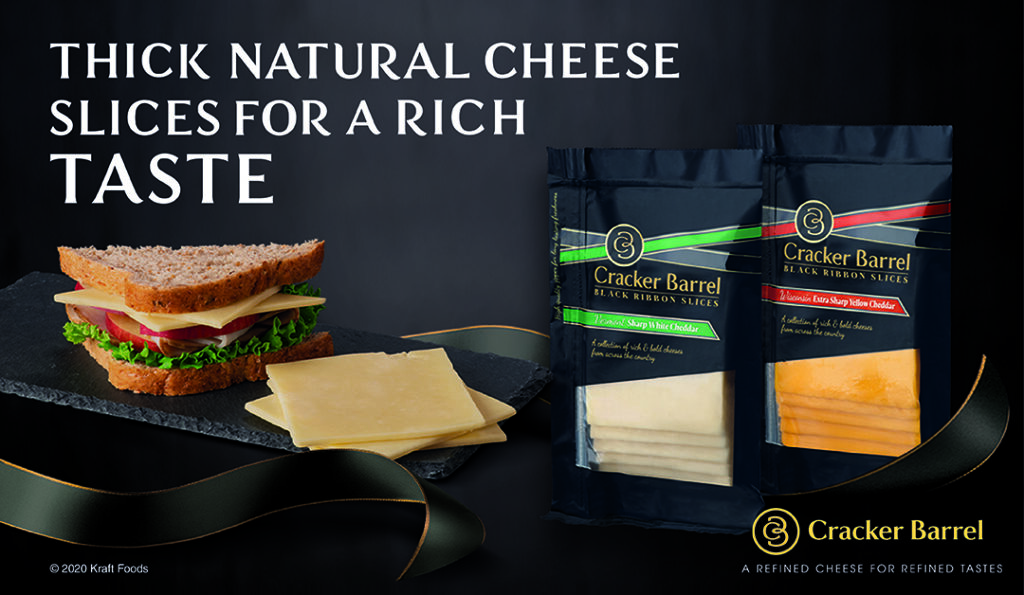
Checking Out - Cracker Barrel Sliced Cheeses
Ellie Wilson
MS, RDN Senior Nutrionist
Cheese please! Cracker Barrel cheeses have been pleasing Americans for generations. The brand was launched in 1954 by Kraft, a heritage brand itself in cheese, as a premium product named for the tradition of socializing around the cracker barrel, an icon of small general stores. Friends and neighbors would gather around the cracker barrel, and spend time connecting, sharing and creating stronger communities.
The sliced cheeses of the Cracker Barrel line, found in the dairy aisle, bring favorite flavors to the table, with Extra Sharp Wisconsin Yellow Cheddar, Heartland Swiss, Wisconsin Mozzarella, Vermont Sharp White Cheddar tapping into dairy traditions from around the U.S. Consistently rich in flavor, the award-winning cheeses are made with proprietary heritage starter cultures that have been part of the Cracker Barrel tradition for over 50 years. The signature black packaging is easy to open and zips closed to maintain freshness. These packages are also very portable, great for day trips and picnics, when you want to grab and go.
Cheese and dairy are getting fresh research on benefits – the matrix of nutrients in dairy includes being a good source of calcium and protein, and using sliced cheeses helps those working on managing calories and serving sizes. Sliced cheeses are a convenient and quick way to top dishes with flavor as they finish cooking, add a creamy layer of flavor in a casserole or sandwich, or power up a quick snack of cheese and (of course) crackers!
With shoppers looking for ways to eat something interesting, and reduce food waste, exploring ways to update leftovers with cheese is a win-win. Leftover grilled chicken? Add some pasta sauce and a slice of Wisconsin Mozzarella for a quick new meal. Leftover veggies? Top with a slice of Extra Sharp Wisconsin Cheddar for a quick flavor boost. Powering up produce? Pair sliced apples and Vermont White Cheddar for a sweet and savory snack! Enjoy!
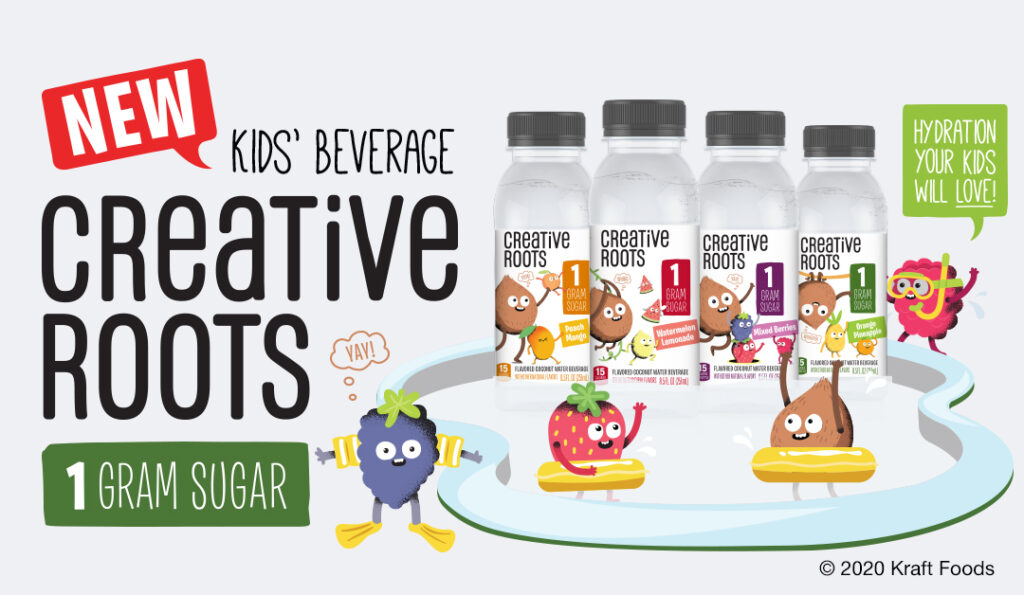
Checking Out - Creative Roots Coconut Beverages
Ellie Wilson
MS, RDN Senior Nutrionist
It can be challenging to ensure children are drinking enough – they get busy, are easily distracted, and can also be chronically fussy about what they will drink. Busy parents have a lot going on right now, especially concerning in a time when everyone is working harder to choose well and provide choices that support good health habits. Drinking water and staying hydrated is essential, and for families on the go, there is a new option on the shelves to explore and enjoy.
The Creative Roots Coconut Water plant-based beverage line starts with coconut water, and is then flavor enhanced with 15 % juice and natural sweetener stevia. Simple ingredient lists and exciting flavors, like Watermelon Lemonade and Peach Mango may be enough to tickle their taste buds and get them to finish up the right-sized 8.5 oz bottle every time they take one. Younger children may also like the fruity characters, The Sploots, decorating the label and sharing smart hydration messages. They feel good when they are hydrated, and you feel good knowing they are improving hydration without added sugars – one gram of sugar in each bottle.
How does this fit into your busy family routine? The Creative Roots Coconut Waters are perfect for grab and go when you are late for the game, headed out on the summer road trip, or playing in the backyard sandbox. It may be a great addition to a child or teen backpack as a handy hydrator in the middle of the day. More than 50% of children may be under-hydrated per a study published in the American Journal of Public Health ¹ – and with new policies in schools likely limiting access to water fountains, the Creative Roots line may be a good back up plan. Families can be confident in their risk management and supporting positive immune system biochemistry with hydration. Kids and adults love the flavor, and some seniors are packing these for their busy days as well. Explore all four flavors to find your favorites. Enjoy!
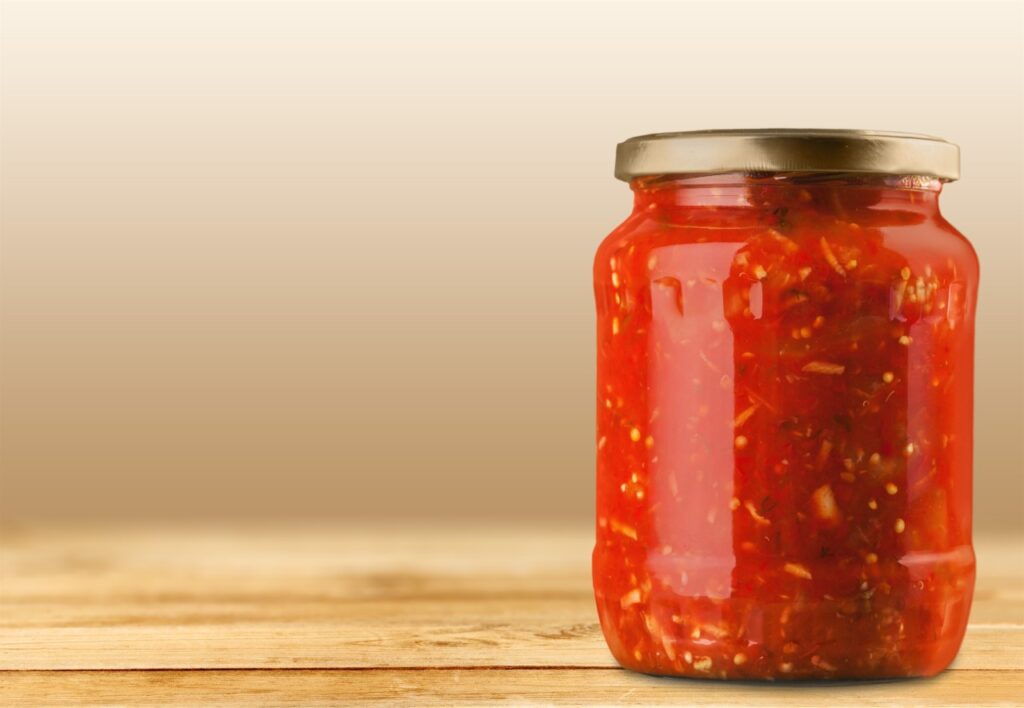
What is in Your CANtry? Five Fabulous Recipes Starring PICS Canned Foods!
Ellie Wilson
MS, RDN Senior Nutritionist
Canned foods have flown off the shelves lately as folks prepare to cook more at home over the next few weeks. Canning was a transformative food preservation advance, a process invented in the late 1700s, in response to a call from Napoleon Bonaparte, who was looking for a way to safely store and transport food to feed his army. It was perfected in the early 1800s, with the first commercial canneries starting up in England and America in 1812 and 1813, respectively. Ironically, the can opener was not invented until 1858! Though it was clear heat was key to the process, it was not understood why until Louis Pasteur demonstrated the presence of microorganisms and the temperatures that killed them in the late 1800s. Foods lose nutrients, quality and appeal as time passes, canning was a game changer for home cooks and commercial food service, and remains a great way to create recipes that are delicious and convenient.
The benefits of canned foods are many – fruits and vegetables are usually canned within a few hours of harvesting, capturing their nutrients and flavor right at the peak, and preserving them for a minimum of about two years, sometimes longer. Most canned items are single ingredient, no other additives necessary to maintain flavor, color and texture. Canned foods are budget and time-friendly, prepped and ready to use. Cans are also one of the most recyclable containers – made of 100% recyclable steel, important to sustainability efforts.* Finally, adults and children who regularly eat canned foods have a better intake of fruits, vegetables and fiber than those that do not.
PICS canned fruits, vegetables, tuna, chicken, beans and soups are top quality – you will love exploring the wide variety and flavors. Check these great recipes out – we are powering up the protein and produce content with a focus on canned beans. Beans are a rising star as families become focused on eating more plant-based and plant-forward foods. Let kids add the beans and some of the ingredients while you supervise – they love eating what they help preparing, and it is a positive way to connect them to food skills. Combining beans and other proteins is a budget-smart way to add benefits and a fresh twist to old favorites. Better meals are in the can!
Cowboy Caviar – A versatile recipe that comes together in just a few minutes! Dress it up with chopped mango or canned pineapple, use it as a dip, a side or a salsa on fish or chicken – delish!
For more canned food recipe ideas check out…
*Ref. Canned Food Alliance

Essentials: Prepping for Health and Wellness
Ellie Wilson
MS, RDN Senior Nutritionist
If you have been to our stores, you know that they are busy, and folks are grabbing items they feel they will need to manage during this unprecedented time. Given that it is still cold and flu season, it may be wise to include some of the list below on your shopping list. Those with chronic issues like diabetes or high blood pressure should follow health care provider recommendations and check with your pharmacist for personal information.
Consider adding these items to your list:
- • Clear liquids
- • Broths/clear soups
- • Clear soda, such as ginger ale
- • Ice pops/lollipops
- • Clear juices, such as apple juice
- • Dry cereal, such as PICS Toasted O’s
- • Saltines/Oyster Crackers
- • Tea – tea bags and prepared bottled tea
To assist with managing mild symptoms after diagnosis and promote social distancing if someone in your home becomes ill:
- • Acetaminophen/Tylenol
- • Ibuprofen
- • Cold medicine*
- • Pedialyte/Gatorade
- • Hand soap
- • Cough medicine* or cough drops
*Check with your pharmacist or health care provider if on medication for high blood pressure, or you have concerns regarding interactions.
Follow all health guidance from local authorities and your health care provider. Follow good hand washing and food safety guidelines as we all work together to keep well. We will all get through this together!
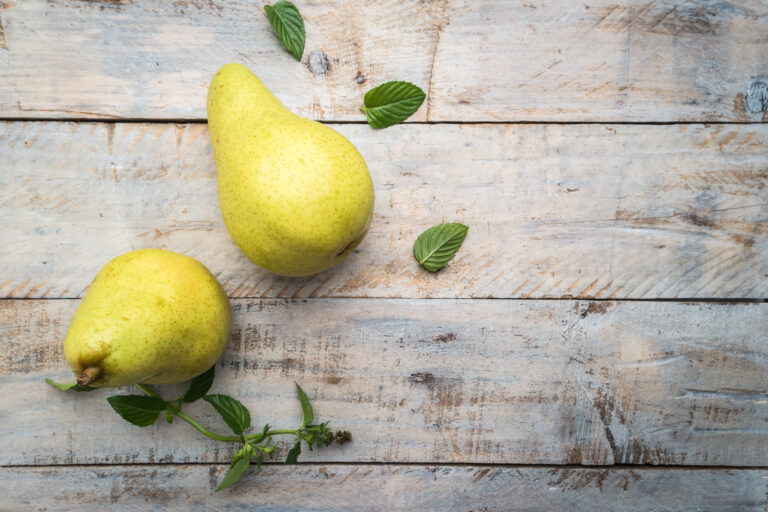
Ellie Wilson
MS, RDN Senior Nutritionist
The Family Fruit Bowl
The family fruit bowl, fresh and fragrant, can make enjoying fruit easy and accessible for everyone that encounters it. Teach kids and cue your own appetite for wellbeing by creating that fresh display in your home every week. March is National Nutrition Month – what better way to kick off a delicious and nutritious spring than creating a beautiful fruit bowl full of flavor and benefits!
Many nourishing fruits need a little time to ripen before you can enjoy their best flavor. Pears do not ripen on the tree, they only ripen after they are picked. In addition to pears, avocados, bananas, and mangoes can all benefit and promote ripening together. The few days generally needed to finish ripening makes pears uniquely suited for that fresh fruit bowl – including a variety of fruit at varying stages of ripeness each week will ensure you can enjoy something every day!
Pears are a powerhouse of flavor and fiber, and perfect for some sweet and savory meals that energize the transition from winter to spring. Chilly mornings that still merit a warm breakfast create a perfect setting for PICS Oatmeal with chopped pears, ginger and pecans. Roast American Heart Association Certified Pork Tenderloin with crushed rosemary on a sheet pan alongside acorn squash stuffed with pears and baked to tasty tenderness. They earn a quick drizzle of PICS Maple Syrup or Honey to finish – yum! Take that Market 32 Honey Turkey panini to the next level with sliced pears and brie – the heat melts it all together into a delicious combo you can share (but you probably won’t!).
Some pear varieties change color from green to gold as they ripen, others do not, so check the neck for ripeness – a little give means you get their best flavor. Join in the fun and share an Instagram picture with #whatsinyourfruitbowl. Learn more here and you might win some great prizes. Check out more wonderful pear recipes at www.pricechopper.com/recipes.
Enjoy!

Sarah Wingate
Pharmacy Intern
Did you know that 1 in 3 Americans are at risk for developing Type 2 Diabetes? Additionally, 1 in 4 Adults with diabetes are unaware that they have the disease. Undiagnosed or poorly managed diabetes can have many serious complications including but not limited to kidney disease, blindness and in some cases amputations.
Risk factors for developing diabetes include:
- Being overweight
- Smoking
- High blood pressure
- Little to no physical activity
- High blood sugar
Diabetes is manageable with healthy lifestyle modifications including diet and exercise. March 24, 2020 is known as the American Diabetes Association (ADA) Alert Day. This is a one day wake up call to inform the public about the importance of diabetes, especially when left undiagnosed or untreated. The ADA encourages everyone to take a Type 2 diabetes Risk Test that can easily be found on their website: www.diabetes.org/are-you-at-risk/diabetes-risk-test/
If you receive a high risk result, it is important to consult your doctor before taking any next step as only a blood test can determine a diagnosis. You are able to email the results to yourself and share them with your physician. You and your doctor can
work on the next steps to prevent a diabetes or prediabetes diagnosis.

If you receive a low risk result, continue with a healthy diet and exercise plan as well as schedule regular check-ups with your doctor. Additionally, if you are 45 or older, the ADA recommends diabetic screening every 3 years.
At Price Chopper and Market 32, we strive to make Diabetes a manageable disease for our patients. Our Diabetes Advantedge Program can provide you with free diabetes medications and free diabetic supplies. Free Medications include- Glimepiride, Glipizide, Glipizide XL, Glyburide, Metformin and Metformin ER. Free Diabetes supplies include- Super thin lancets, insulin syringes, pen needles and an auto lancing device. We are here to help you live a happier and healthier
life with Diabetes. Ask your pharmacist for more details.


